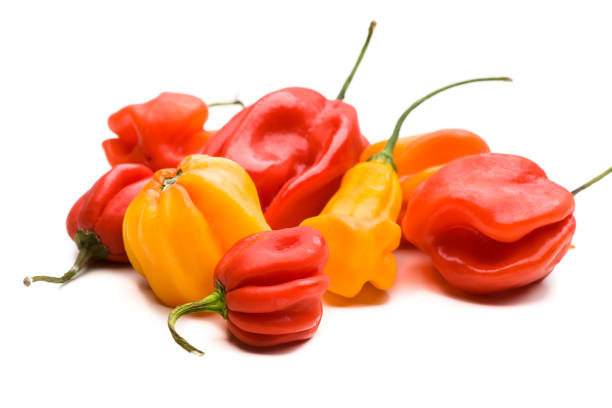You know that they are many foods which we eat and many different food available in market but today I will tell you top 10 amazing fact about food.
1-world hottest chilly
2- Turnip
Turnips are a flexible harvest. Like beets, they can be developed for greens or the bulb. They develop decently fast, developing in around 2 months, so you can get more than one gather in a season. Anyway the bulbs structure best in cool climate, around 60 F., so late-winter and fall crops are leaned toward.
We are generally acquainted with the white and purple tennis ball-sized turnips regularly sold, however there is a reasonable plan of assortment, including little, delicate radish-sized turnips. Turnips are in the Brassicaceae or mustard family and their green tops have a flavor that is like mustard greens. They have been developed for quite a long time.
Turnips have mustard-like leaves and their bulbs are for the most part either white or yellow. The piece of the bulb that juts over the ground and is presented to daylight will change tone to purple or green.
Leaves: Leaves are light green and somewhat shaggy. They develop into an extended oval, with toothed or wavy edges.
Blossoms: The blossoms are little and yellow. Likewise with other Brassica plants, the 4 petals structure a cross, which is the reason they are likewise alluded to as cruciferous vegetables.
3-mutant apple
At the point when Ken Morrish took this apple out a tree in his nursery, he thought a comedian had painted portion of it red.
However, subsequent to investigating it intently he understood that the momentous split colors on the organic product were a characteristic peculiarity. Furthermore, the peculiar apple turned Mr. Morrish into something of a superstar in his town with scores of neighbors lining up to snap a picture of it.
Specialists say that the chances of finding an apple with such an ideal line between the green and the red are more than 1million to one.
This Golden Delicious apple is by all accounts having a character emergency, split totally down the center into red and green. Neighborhood agriculture specialists are confused by the example.
Horticulturists say the colorings on the apple are most likely brought about by an irregular hereditary transformation.
4-banana beer
Africans were using locally available crops to brew beer long before Europeans introduced their own techniques, but East Africans stand out in that their traditional beer is made with bananas. In Uganda, one of the names under which the original beer bananas are known is mbidde. It is also the name given to the cluster they form within a large group of otherwise cooking bananas, the East African highland bananas (EAHB).
The low genetic diversity underpinning EAHB cultivars suggests that they are derived ― through mutations ― from a single ancestor that may have been introduced as long ago as 500 BC. The mbidde cultivars are mutants of the cooking zones, but since farmers propagated them despite their lack of culinary qualities, it would mean that mbidde bananas are an example of a crop domesticated for beer, not food.
The practice of making banana beer the traditional way is still alive in many rural areas of Uganda, Tanzania, Burundi, Rwanda, and the Democratic Republic of Congo (DRC), where it is an important part of the rural economy along with non-traditional methods of processing bananas into wine and gin. As Bioversity International scientist Anne Rietveld noted during her presentation at the 2016 ISHS-ProMusa symposium, these banana-based beverages are one of the few income-generating options available in rural areas.
5- popcorn
Scriptural records of "corn" put away in the pyramids of Egypt are misconstrued. The "corn" from the holy book was most likely grain. The error comes from a changed utilization of "corn," which is utilized to imply the most-utilized grain of a particular spot. In England, "corn" was wheat, and in Scotland and Ireland, the word alluded to oats. Since maize was the normal American "corn," it took that name - - and keeps it today.
It is accepted that the main utilization of wild and early developed corn was popping. The most established ears of popcorn at any point found were found in the Bat Cave of west-focal New Mexico in 1948 and 1950. Going from more modest than a penny to around 2 inches, the most established Bat Cave ears are around 4,000 years of age.
Popcorn was fundamental to mid sixteenth century Aztec Indian services.
Bernardino de Sahagun expresses: "And furthermore a few young ladies moved, having so promised, a popcorn dance. As thick as tufts of maize were their popcorn wreaths. Furthermore, these they set upon (the young ladies') heads." In 1519, Cortes got his most memorable sight of popcorn when he attacked Mexico and came into contact with the Aztecs. Popcorn was a significant nourishment for the Aztec Indians, who additionally involved popcorn as enhancement for stylized hats, accessories, and decorations on sculptures of their divine beings, including Tlaloc, the lord of downpour and ripeness.












